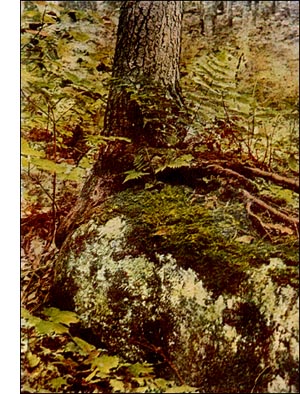Genus Tetraplodon
 Genus TETRAPLODON, Bruch & Schimp.
Genus TETRAPLODON, Bruch & Schimp.The plants of the Genus Tetraplodon are perennial, growing in densely crowded cushions. They closely resemble the plants of the genus Splachnum, but differ principally in that the enlarged part (apophysis) of the pedicel under the spore-case is not inflated and is of the same colour and consistency as the spore-case.
The plants are peculiar in their choice of habitat, being invariably found on animal substances. Tetraplodon angustatus is said to have been found growing on an old stocking near the summit of Inglesborough, Yorkshire, and also on an old hat on Mt. St. Bernard, Switzerland. The stems are branching and bear root-like filaments. The leaves are lance-shaped or oval-oblong, and are prolonged into an awl-like point.
The spore-cases are small and erect with conical-convex, obtuse lids. They are borne on pedicels which are enlarged just under the spore-case to form a club-shaped apophysis. The apophysis is of
importance as an assimilating and transpiring organ and is the only part of the moss which bears pores (stomata).
The peristome is single with sixteen dark-purple double teeth reflexed when dry. These are at first in groups of four, and afterward in pairs, a character which has suggested the generic name Tetraplodon from the Greek for; four-fold, and; a tooth.
Nine species are known in all, four being found in North America.
Tetraplodon Mnioides Moss